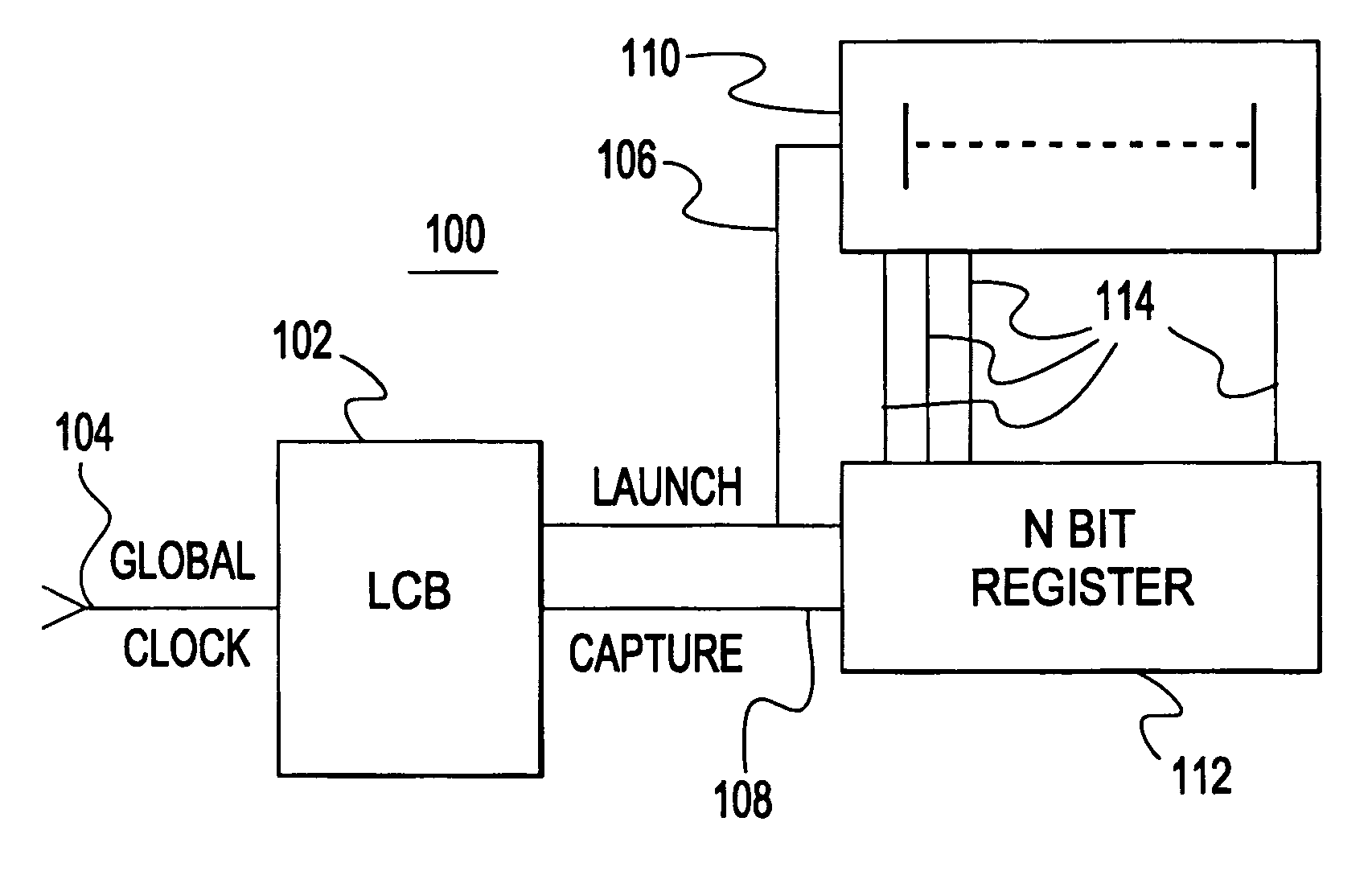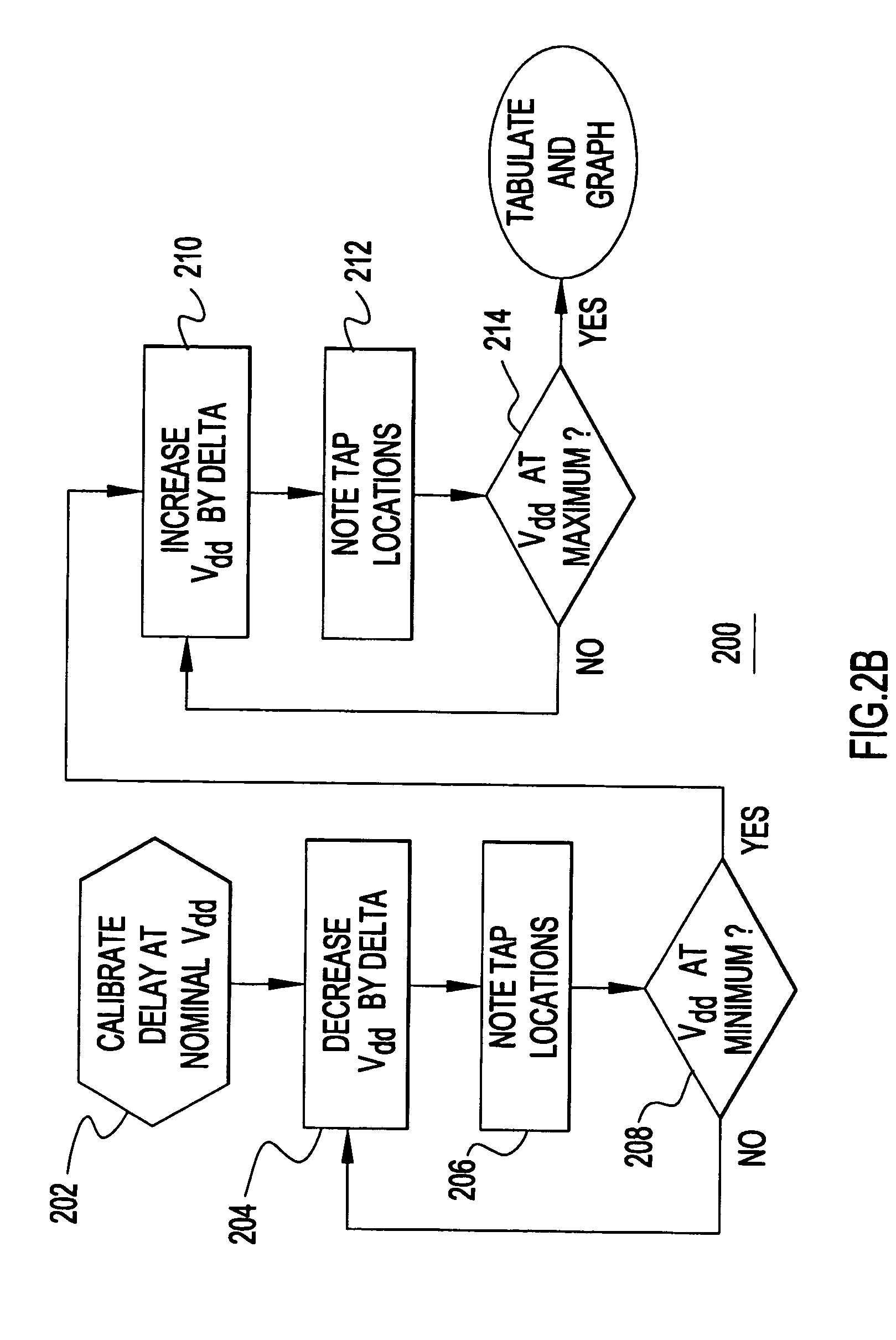Built in self test circuit for measuring total timing uncertainty in a digital data path
a self-testing, digital data path technology, applied in the direction of pulse characteristics measurement, instruments, horology, etc., can solve the problems of timing uncertainty, latches that randomly enter metastability, latches that cannot be loaded correctly, etc., to achieve accurate recovery of vdd power bus noise waveform
- Summary
- Abstract
- Description
- Claims
- Application Information
AI Technical Summary
Benefits of technology
Problems solved by technology
Method used
Image
Examples
Embodiment Construction
[0026] Turning now to the drawings and, more particularly, FIG. 1 shows a block diagram of an example of a logic stage counter 100 according to a preferred embodiment of the present invention. A local clock block (LCB) or clock buffer 102 receives and re-drives a global chip clock 104 into 2 complementary local clocks 106, 108. One clock, a launch clock 106, is provided to a delay line 110 and launches the timing edge in the delay. The LCB 102 and delay line 110 mimic data propagation delay through an actual data path, e.g., in a microprocessor. Both clocks 106, 108 clock an N bit register 112. Delay line taps 114 are stage inputs to N bit register 112. For example, N=129 may be a convenient length for holding 3 cycles worth of edges. The second clock, a capture clock 108, captures the forward position of the timing edges in the N bit register 112. Although in this example, the launch clock 106 drives the delay line 110, either clock, the launch or the capture clock can drive the de...
PUM
 Login to View More
Login to View More Abstract
Description
Claims
Application Information
 Login to View More
Login to View More - R&D
- Intellectual Property
- Life Sciences
- Materials
- Tech Scout
- Unparalleled Data Quality
- Higher Quality Content
- 60% Fewer Hallucinations
Browse by: Latest US Patents, China's latest patents, Technical Efficacy Thesaurus, Application Domain, Technology Topic, Popular Technical Reports.
© 2025 PatSnap. All rights reserved.Legal|Privacy policy|Modern Slavery Act Transparency Statement|Sitemap|About US| Contact US: help@patsnap.com



